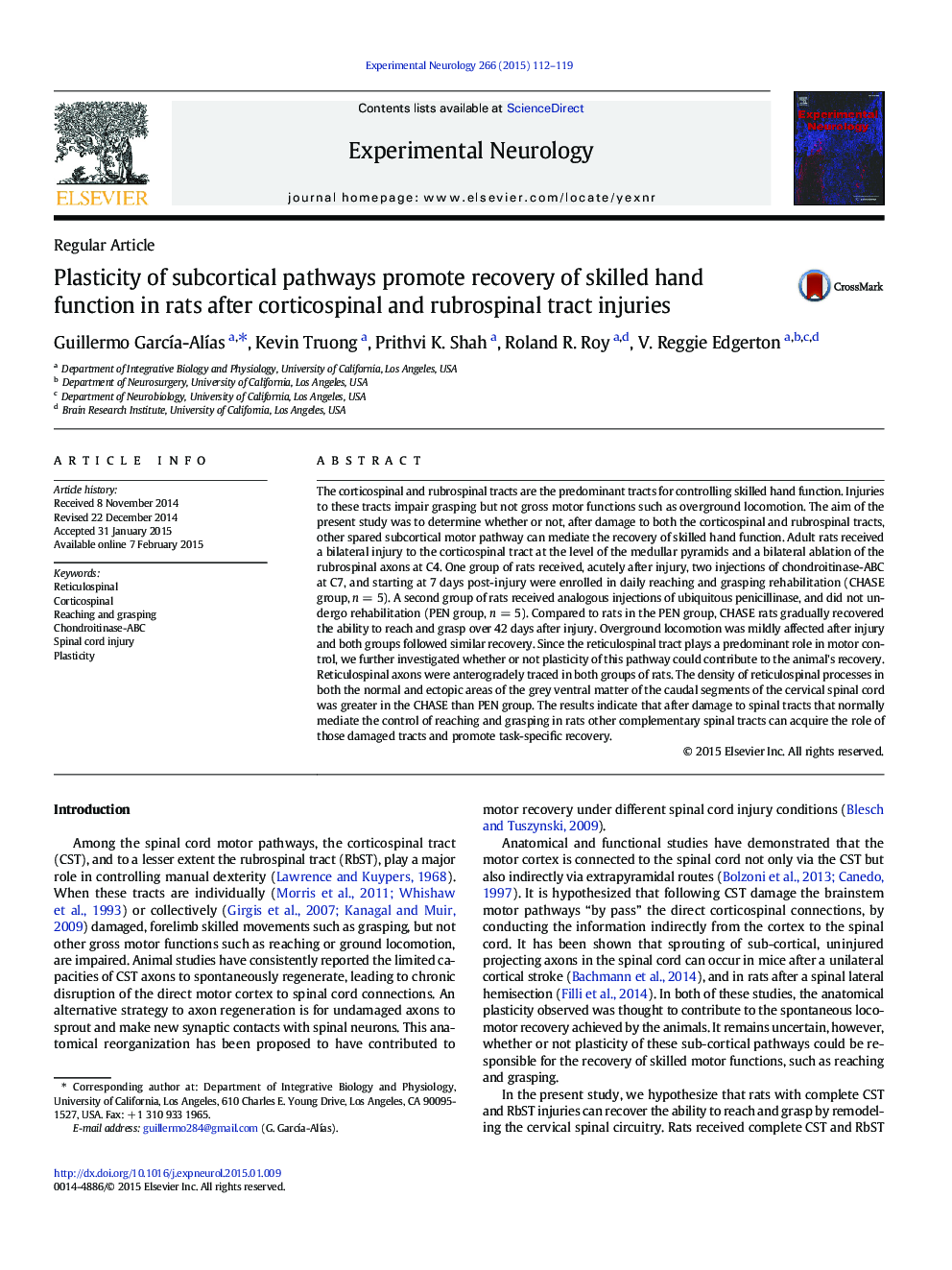| Article ID | Journal | Published Year | Pages | File Type |
|---|---|---|---|---|
| 6017445 | Experimental Neurology | 2015 | 8 Pages |
â¢Injuries to the corticospinal and rubrospinal tracts severely impairs reaching and grasping.â¢Animals treated with Chondroitinase-ABC and undergoing forelimb rehabilitation recovered their abilities to reach and grasp.â¢These treatments enhanced sprouting of reticulospinal axons in the caudal segments of the cervical spinal cord
The corticospinal and rubrospinal tracts are the predominant tracts for controlling skilled hand function. Injuries to these tracts impair grasping but not gross motor functions such as overground locomotion. The aim of the present study was to determine whether or not, after damage to both the corticospinal and rubrospinal tracts, other spared subcortical motor pathway can mediate the recovery of skilled hand function. Adult rats received a bilateral injury to the corticospinal tract at the level of the medullar pyramids and a bilateral ablation of the rubrospinal axons at C4. One group of rats received, acutely after injury, two injections of chondroitinase-ABC at C7, and starting at 7 days post-injury were enrolled in daily reaching and grasping rehabilitation (CHASE group, n = 5). A second group of rats received analogous injections of ubiquitous penicillinase, and did not undergo rehabilitation (PEN group, n = 5). Compared to rats in the PEN group, CHASE rats gradually recovered the ability to reach and grasp over 42 days after injury. Overground locomotion was mildly affected after injury and both groups followed similar recovery. Since the reticulospinal tract plays a predominant role in motor control, we further investigated whether or not plasticity of this pathway could contribute to the animal's recovery. Reticulospinal axons were anterogradely traced in both groups of rats. The density of reticulospinal processes in both the normal and ectopic areas of the grey ventral matter of the caudal segments of the cervical spinal cord was greater in the CHASE than PEN group. The results indicate that after damage to spinal tracts that normally mediate the control of reaching and grasping in rats other complementary spinal tracts can acquire the role of those damaged tracts and promote task-specific recovery.
